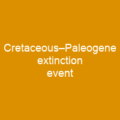Unveiling Kosmoceratops: A Dazzling Dinosaur from North America
Kosmoceratops is a genus of ceratopsid dinosaur that lived in North America, approximately 76-75 million years ago. Imagine stepping back in time to the Late Cretaceous period and encountering this magnificent creature! Discovered in Utah in 2006 and 2007, Kosmoceratops quickly became a sensation due to its elaborate skull ornamentation.
Discovering Kosmoceratops
The find was significant not only for the unique features of Kosmoceratops but also because it added to our understanding of ceratopsian dinosaurs. The genus name, Kosmoceratops richardsoni, is a nod to Scott Richardson, who found the specimens. This discovery was part of a broader ‘ceratopsid renaissance’ in the early 21st century, where many new taxa were named since 2003.
Physical Characteristics and Growth
Kosmoceratops had a length of about 4.5 meters (15 feet) and weighed around 1.2 tons. Its distinctive features included hundreds of complex dental batteries behind an edentulous beak, a triangular upper premaxillary beak, and a blade-like nasal horncore with an elongated base and flattened top. The parietosquamosal neck frill was very derived, with small parietal fenestrae placed far back and ten hook-like epiossifications on the hind margin.
Studies of bone histology show that Kosmoceratops grew rapidly and had an elevated metabolism. This rapid growth is a testament to its unique evolutionary path within the ceratopsid family. The parietosquamosal neck frill was particularly noteworthy, as it was very short relative to its width among chasmosaurines.
Phylogenetic Analysis and Classification
The phylogenetic analysis of Kosmoceratops is complex. In 2010, Kosmoceratops was placed in the Chasmosaurinae group due to its premaxilla having a narial strut and a triangular process. However, in 2011, Jordan C. Mallon and colleagues found support for the clade containing Kosmoceratops and Vagaceratops. In contrast, Longrich in 2011 and 2014 found that the sole species of Vagaceratops was retained in Chasmosaurus, while Kosmoceratops did not cluster closely with other taxa.
These studies highlight the ongoing debate among paleontologists about the classification and relationships within ceratopsid dinosaurs. The evolution of ornament complexity in ceratopsians increased over time, with some species having more complex frills than others. Size rather than shape was acted upon by sexual selection, as evidenced by the growth patterns observed in Kosmoceratops.
Geological Context and Fossil Preservation
Kosmoceratops is known from the Kaiparowits Formation in Utah, which dates back to the late Campanian age of the Late Cretaceous epoch. This formation represents an alluvial to coastal plain setting that was wet and humid, with large rivers flowing across the plains into the Western Interior Seaway.
The preservation of fossils in the Kaiparowits Formation was influenced by taphonomic processes such as scavenging and erosion. Levitt reported that every bone of the assigned subadult or adult specimen UMNH VP 21339 appeared to have been broken before depositing, suggesting a pond environment.
The area of Laramidia, which was only 20 percent the size of modern North America, saw a major evolutionary radiation of dinosaurs. The discovery of Kosmoceratops and Utahceratops greatly increased the number of known chasmosaurines from the Western Interior Basin. This diversity is a testament to the rich fossil record of this region.
Biogeographic Implications
The biogeographic implications of Kosmoceratops are fascinating. The evolutionary radiation of ceratopsids appears to have been restricted both in time and geographically, with most taxa being known from latest Cretaceous sediments in the Western Interior Basin.
Sampson and colleagues viewed this as the strongest support for the idea of dinosaur ‘provinces’ within Laramidia. They suggested a sequence of events in the evolution of chasmosaurines consistent with phylogenetic, stratigraphic, and biogeographic evidence. The discovery of Kosmoceratops and Utahceratops shows that they lived at the same time and likely in the same ecosystems, which was rare among ceratopsids.
Geochronologic dating indicates that the brief geological interval preserved within the Kaiparowits Formation was contemporaneous with the Dinosaur Park Formation in Alberta. This suggests a connection between northern and southern Laramidia, but the exact nature of this connection remains a topic of debate among paleontologists.
Conclusion
Kosmoceratops is more than just a dinosaur; it’s a window into the complex evolutionary history of ceratopsid dinosaurs. Its unique features and rapid growth patterns challenge our understanding of these magnificent creatures. As we continue to uncover new fossils, the story of Kosmoceratops and its kin will undoubtedly evolve, adding layers of complexity to our knowledge of dinosaur diversity.

You want to know more about Kosmoceratops?
This page is based on the article Kosmoceratops published in Wikipedia (retrieved on November 28, 2024) and was automatically summarized using artificial intelligence.







